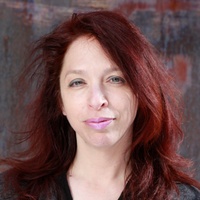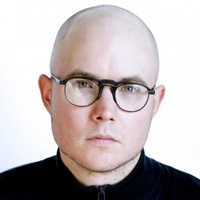On letting your materials guide you
Prelude
The work of Kristen Wentrcek and Andrew Zebulon focuses on the manipulation and transformation of industrial materials, through a language rooted in furniture design and architecture. They strive to stir the subconscious through the visceral familiarity of these materials.
Conversation
On letting your materials guide you
Visual artists Kristen Wentrcek and Andrew Zebulon discuss how their early forays into furniture design led them into a fine arts practice, what it means to be both life partners and creative partners, and the ways in which your materials will tell you where you need to go.
As told to Willis Plummer, 2970 words.
Tags: Art, Design, Collaboration, Beginnings, Production, Process, Inspiration.
Can you tell me how you started making furniture and working together?
Kristen Wintercheck: I started designing things, but I was having other people manufacture the pieces. And then, when Andrew and I started working together, we decided to scrap that and start making everything from scratch, because when you have somebody else do the fabrication, then you have to work within their vernacular of materials and timelines and colors and whatever. But if you make everything yourself, you can constantly assess the quality. You can just make one of something. You can do an experiment. You can do a collaboration. It’s all just a lot easier.
Andrew Zebulon: Yeah, and when you have something manufactured you have to do a minimum order, so you would design something for a specific purpose but then have to make like 50 or 100 of them.
Kristen: So it made sense to start doing things in-house. And with furniture, specifically, if you’re a small company, you’re typically working with architects or interior designers or somebody who’s spec’ing for a job. Everything has to be custom anyway for most of those jobs, so it just made more sense.
Andrew, were you making furniture before you started working with Kristen?
Andrew: No. I was in an art program in school, and I had done some sculpture and a lot of other weird random things. My dad is a carpenter and I would work for him at his jobs when I was growing up, so I have a lot of practical labor-force skills. I could cut wood and use a nail gun, that kind of thing. And then when we met, I did some illustration work for Kristen for packaging and then we started working together. But no, I’d never actually never made a piece of furniture on my own before we met.
Kristen: I think you came with a lot of practical knowledge that was really important. Like, you knew that a nail gun exists and how a nail gun is used, just from seeing it. We had enough information to get things rolling, but not so much that we were inhibited by knowing exactly how a chair is built. We were able to approach furniture with this fresh approach, but still with enough information to get started.
Andrew: When I was in high school, working with my dad at his job sites, he would always do this whole spiel where he would be like, “I don’t want you to do this for a living. This is hard work.” He would pointedly not teach me too much because he didn’t want me to be able to fall back on building as a career.
I was kinda pissed about that a little bit. Like, “I have to do all this lame stuff and I can’t do anything really cool?” I did have a lot of exposure, but in retrospect, I think you’re right. Ultimately, my dad’s approach has come in handy in the sense that I just have this weird sort of distance that we would bridge through not knowing how to properly do something.
Kristen: Yeah, when we got the table saw, you were like, “Oh, there’s a push stick. Pull out the push stick so we don’t chop our hands off.” Really, really basic knowledge. That’s good stuff.
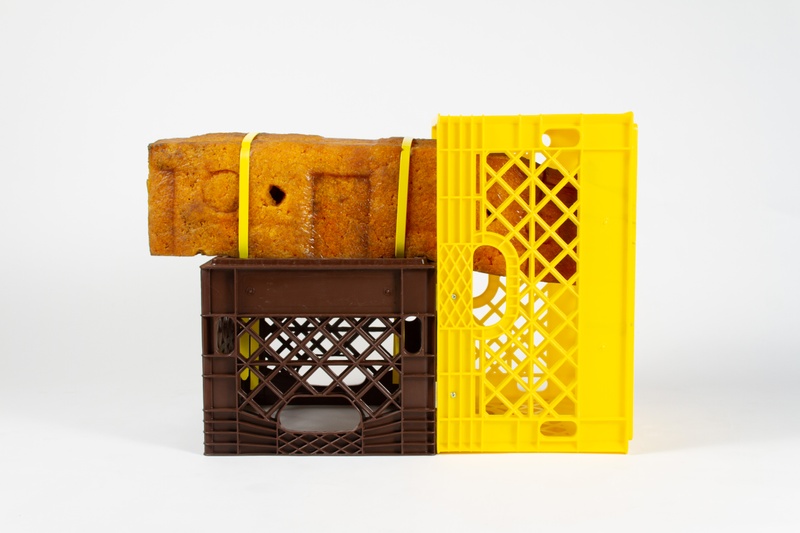
When you were outsourcing the fabrication, did you already work out of your own space?
Kristen: Yeah, I had a space. My first space was in Bushwick and then I had a space at Morgan and Grant. That was the space where Andrew and I started working together. And then we went to the Pfizer building and then from there we moved to our current space on the edge of Bed-Stuy and Crown Heights. The Pfizer building was really cool, but they made it too nice, so it’s expensive now. We’re constantly chasing the shitty buildings where we can optimize for space. We don’t need them to be nice.
How do you think about your relationship to your workspace? It seems like the factory has really allowed you to stretch out and do new kinds of work.
Kristen: It’s insane. I don’t think we’ll ever find anything like this place again. It’s pure luck and timing.
Andrew: Yeah. It’s an obvious statement, but it’s all about having the space, right? The sheer volume of a room. Everything else about the current place sucks, essentially. I mean it looks good but as a place to work every day, it’s pretty much awful. There’s no heat, there’s no air, there are no windows, but it’s so big. And I think especially in the last couple years we’ve been like, “Oh, we should really maximize what we have been doing here.” We’ve been building huge, weird, insane inconvenient things, having our shows here, and it’s been a crazy thing.
Kristen: Plus, when you’re doing any sort of fabrication, which we were doing more of in the past, it’s hard to have multiple projects going if you don’t have enough space, because then you have to stack stuff to make room to work and you end up damaging pieces as you’re making new pieces, which is a really… fucked up scenario.
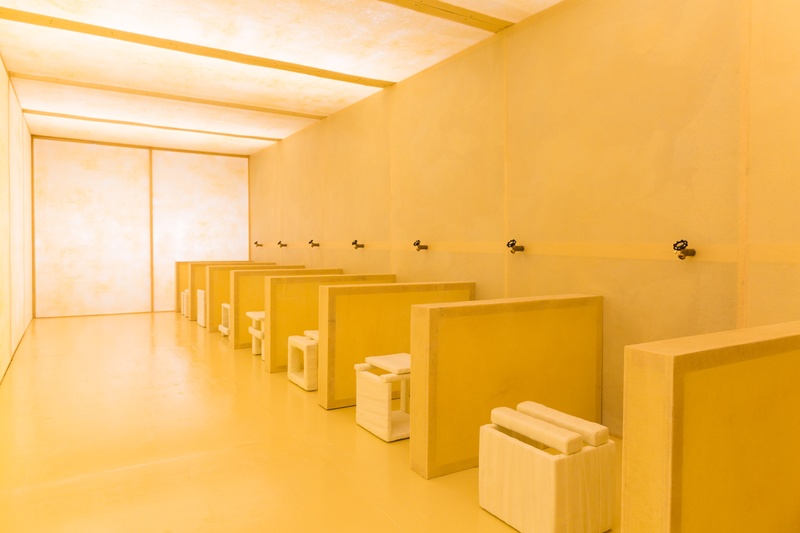
Right. So you decided to start making furniture in New York, the most space-constrained place ever.
Kristen: Yeah, it’s crazy. I was working for a real estate developer and I would see the stuff that we were paying people to do. Like, we’d be working on a condo and we’d pay someone like $20,000 to come and install just a really simple floating vanity. So I thought, “That seems easy enough.” I guess that showed me that if you can make it work, you can get paid enough to do it. So I had a financial model and then Andrew and I started to do our own take on it, aesthetically.
Your work has always seemed kind of non-functional, like art objects more than furniture. It’s surprising that you started doing such traditional fabrication. How did you guys develop your aesthetic, and how do you think about the work that you make now? Is it still furniture?
Andrew: It’s a pertinent question for us, because especially over the last couple of years, we’ve been changing what we do, and at this point we don’t really think much about making furniture. We’ll do the occasional fabrication job, but we’re much more focused on just making art.
I think two things happened that pushed us away from furniture and towards art. We realized that we weren’t that interested in building functional furniture. If you’re making stuff for everyday use and marketing it that way, you have to be really good at what you’re doing. Not that we’re necessarily bad at it—but we just maybe aren’t as good as the other people in the space, and honing that wasn’t what we were interested in.
Kristen: Beyond that, the trajectory (if you’re going to make functional furniture) is that you just get more clients and then you get a bigger space and you get bigger machines, and you get employees. We never even wanted to have an intern. So we maxed out on what we could do in that space almost immediately.
Andrew: That’s a good point. It’s a logistical thing. We were thinking, “Okay, well, if you don’t want to grow into this bigger thing that is able to fill an order for 50 chairs that are all identical and will all last 20 years with people jumping on them and spilling coffee on them, what do you do?”
The other thing that pushed us toward art is that we were getting restless and were trying to think beyond just what you can do with a piece of wood. When you’re making pieces yourself in a small room with just power tools, it’s not like you can really do a lot of metal working or the elaborate stuff that a factory could.
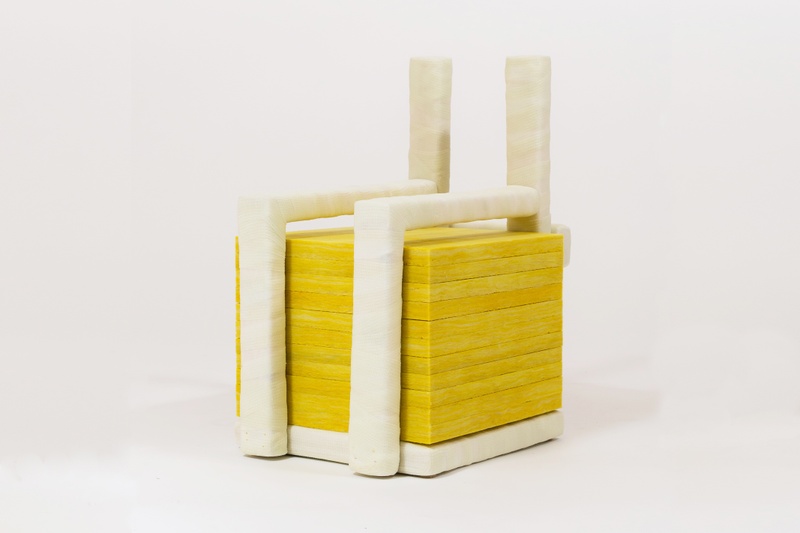
So we were like, “Well, what else? What else can we use and in what ways?” And that sort of pushed us away from stuff that’s more functional. Kristen has always been super interested in materials. She’s constantly bringing different materials to the table that she wants to use. We were developing a strategy of forcing whatever weird material we had into a furniture context. We realized that’s maybe not the best thing to do for furniture, because if you want a chair or a tabletop that you can use day-to-day, it can’t really be made of raw fiberglass or untreated rubber. It’s not comfortable and you can’t clean it. So the work we were doing just started to move in a more art-object direction.
Kristen: The more experimental work we make, the more jobs we get where we can pursue those interests. We’re doing the set for a fashion show next month. I think the designer got in touch because of the other work we’ve been doing recently.
Andrew: Yeah, he just DM’d us on Instagram. There are a couple things he needs the pieces to do, but basically we can do whatever we want, which is insane and cool.
Kristen: There’s a restaurant called Squirrel in L.A. They’re opening a new restaurant and the Creative Director sent us another message on Instagram, like, “I want you to do a piece for the new restaurant. It can be whatever you want.” I think the farther we get away from our work being comfortable and functional, the more projects come in where we’re allowed to pursue our vision, which builds out our portfolio and reinforces our trajectory away from furniture and fabrication.
You touched on the different kinds of materials that you work with and how your process has developed around them. Can you say more about how you explore new mediums?
Kristen: I like to catalog stuff as I see it. I particularly like anything that’s sort of visceral.
Andrew: I think visceral is one word, but I think also maybe evocative. I feel you’re often talking about how when you see a material or interact with it, it sort of pings something in your brain that makes you think of another association.
Kristen: I think they’re all kind of American, too. I think they’re unique to our… not our adolescence, necessarily, but they’re materials that I’ve been seeing for 35 years.
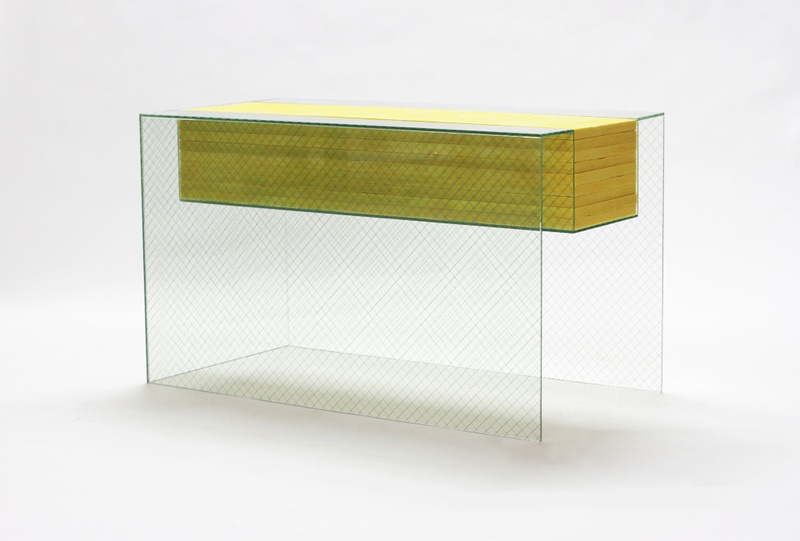
Beyond fiberglass and industrial rubber, what kinds of stuff are you thinking of?
Kristen: What we typically do is keep an archive of the materials that we’re interested in, and then a project will come up where something in the archive is perfect for it. Like, Easter grass for example—we haven’t figured out how to use it yet, but this is in my top five. Swimming pool lanes—maybe we’ll figure out how to use those at some point. The orthopedic cast, that’s something we’ve already used, but you know when you break your arm and they mold a cast on your arm and everyone signs it? We made a bunch of stuff for a show out of that.
We had to buy it from a medical supply place and figure out how to wrap it around a two-by-four and how big the two-by-four had to be for your brain to connect the material back to a broken arm without doing something super literal like making an arm. Or making it look “bodily.” That’s one of the challenges.
Andrew: Kristin will say, “Oh, I’ve always wanted to use this weird vinyl curtain thing.” And then we’ll ask ourselves, “Well, can we literally use the material or is this a situation where we can find out what it’s made from and use that in some other application like in a mold? Could we pour it?” We’ll start there and then get 10 steps down the road and end up with work that’s actually totally different visually or practically from what we started with. But, it has a couple of kernels of the thing that Kristen liked about the material to begin with. There’s an exploratory period where we’re just kind of figuring out what we’re doing.
Do you do a lot of sketching before you start building, or do you just start throwing things together?
Andrew: Yeah, when we’re in the early stages of something, we’ll definitely sketch stuff, but we have very different approaches. I’ll tend to draw sort of vague shapes, but Kristen tends to want to be more… how would you describe it?
Kristen: I feel like Andrew can spend weeks doing shapes, but I need to make a version of the piece in the studio and then move it forward with some drawings and then make another object. And then move forward with some drawings. I need actual physical prototypes to assess which qualities of the work can get carried forward and which ones have to be dumped.
Andrew: I’m often bitching about the prototypes because they’re really precarious and they fall apart really easily, but it does help to have a visual sense of how the shapes might actually feel in physical space.
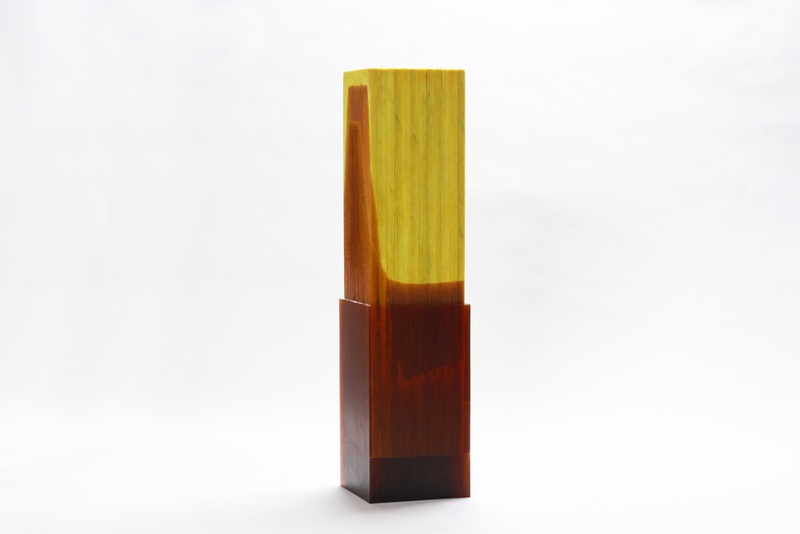
Kristen works in the factory full-time, but Andrew also works a full-time job at Tumblr. How does that inform your roles and the collaborative process?
Kristen: We’ll work together all weekend and then we at least have one weekday where we meet at the factory after Andrew gets off work. When we’re together we solve the blocking problems or try to get past the decision-making points and then we leave open ends. I move the ball forward to the next place where we need to decide something together.
With a lot of projects, the hardest part is establishing our visual language for how it should look. Right now we’re coating foam with vinyl and it took a long time to figure out how to put the vinyl on it. So now that we’ve figured that out, we can start doing it together and then I can finish it during the workweek by applying the same technique that we figured out over the weekend.
Andrew: Yeah, and certainly there are other things that you work on, too—like fabrication jobs, or things that are more commercially oriented, right? Those are things that you often do a lot of work on.
Kristen: Yeah, I’ll go get materials or go to a meeting with a client and then I just fill Andrew in on the details of whatever comes out of those meetings and phone calls.
Andrew: My job is flexible enough, too. I can jump on a call or go to a meeting if it’s important for both of us to be there.
Do you think that having a creative partnership helps to hold you accountable to actually going to the studio and doing the work?
Kristen: I don’t think so. I actually think you keep me from going insane. I would go psycho and probably sleep here.
Andrew: I think if I was working by myself, I would work forever on one thing and if Kristen was working by herself, she’d like crank out 50 things in that same amount of time. I think what’s ideal about working together is this push and pull we have—we end up with 10 good things instead of 50 maybe half-finished things or one piece that never gets done. So more than motivation, it’s maybe a sense of urgency, which is good. You need to have that to finish something that is so internally driven.
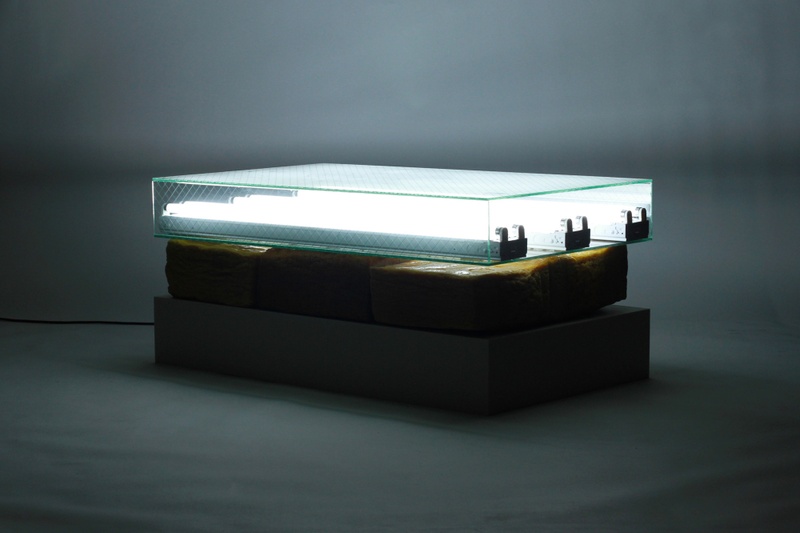
Do you think that you could have the kind of working relationship that you have if you weren’t dating?
Kristen: I think we could. Yeah. Do you?
Andrew: I think it’s a harder question than it seems, because obviously you have the ability to talk very straightforwardly and frankly with me.
Kristen: That’s true. With somebody else, I might be more polite about saying something. Not that we’re rude, but I think that we can both hold our ground really firmly, which would be harder with someone you were less intimate with.
Andrew: You can have a really close working relationship with a friend or a business partner and spend a lot of time with them, but because we spend almost all of our time together—we work together, we live together, we’re hanging out when we’re not in the studio, and then when we’re in the studio, we’re hanging out and we’re working—so then we can kind of work all the time. While we’re making dinner, we can talk about it. Everything that we do or experience together funnels into the work in a subconscious way.
Kristen: That’s insane.
Andrew: I know it sounds insane now that I say it, but I think that what you get is something that would be harder to duplicate with someone who you weren’t in that kind of relationship with. I guess you could just be like platonic life-mates or something.
Andrew Zebulon and Kristen Wintercheck recommend:
Top 5 imagined accidental studio deaths:
- Our windowless studio catches on fire, we get trapped and perish
- Exposure to toxic fumes/vapors melts our eyes/faces/skin off
- Chopping a hand off with the table saw and bleeding out
- Accidental nail gun shot to the head
- One of our pieces falls over and crushes us
- Name
- Andrew Zebulon and Kristen Wintercheck
- Vocation
- Visual artists, Sculptors
Some Things
Pagination
